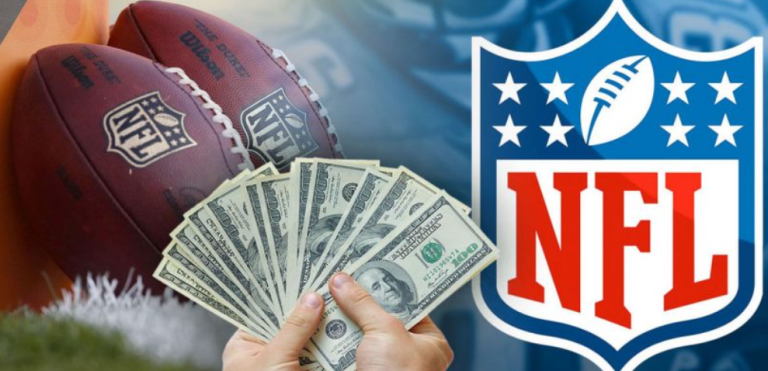How to bet on softball in the USA
This sport has evolved into a dynamic segment of the US sports wagering market, offering unique opportunities for both newcomers and seasoned players. Understanding the mechanics, legal framework, and strategic approaches to how to bet on softball ensures you make informed decisions while enjoying this fast-paced sport. This guide breaks down everything from regulatory requirements to advanced strategies, helping you navigate the wagering landscape with confidence.
⚾ Softball betting surge: The US softball wagering market grew by 340% between 2019-2024, with the Women’s College World Series generating $45-60 million in betting handle annually. Oklahoma’s dominant program alone attracts 15-20% of all college softball wagers during tournament play, while the emergence of Athletes Unlimited professional league created year-round betting opportunities previously unavailable in this sport.
A brief to softball betting in the USA
The wagering market for this sport expanded significantly after the 2018 Supreme Court decision overturned PASPA. College games dominate the wagering landscape, especially during March through June when NCAA tournaments attract major action. The sport’s seven-inning format creates faster-paced betting opportunities compared to traditional nine-inning baseball, with games typically completing in 90-120 minutes and enabling multiple wagers within single evenings.
Can you bet on college softball? Yes. Division I games, conference championships, and the Women’s College World Series are widely available at licensed sportsbooks. Programs like Oklahoma, Florida State, and UCLA generate substantial wagering volume with competitive odds and comprehensive markets.
Professional leagues including Athletes Unlimited also feature on sportsbook boards, offering moneyline wagers, run totals, and player props with lower limits than mainstream sports.
💡 Tournament timing advantage: Softball betting volume spikes 450-600% during conference tournament weeks in May, creating opportunities to exploit casual bettor money inflating popular teams’ odds by 8-15%. Sharp bettors target undervalued mid-major programs with strong pitching staffs that consistently outperform inflated expectations against power conference opponents in early tournament rounds.
Local currency and crypto
All licensed US sportsbooks operate in United States Dollars (USD), with minimum deposits from $10-$20. When placing wagers on games, minimum stakes start at $1-$5, while maximums vary by match importance. Regular season college games cap at $500-$1,000, while championship events accommodate higher stakes. Licensed operators process USD transactions through established banking infrastructure ensuring regulatory compliance and consumer protection standards that offshore platforms cannot match.
Cryptocurrency wagering is available through offshore platforms accepting Bitcoin (BTC), Ethereum (ETH), Litecoin (LTC), and USDT. Crypto deposits process within minutes, withdrawals complete in hours versus 3-5 business days for traditional banking. Minimum crypto deposits start around $20 equivalent.
💡 Bet and play with BetWhale: BetWhale offers competitive odds on games alongside extensive casino gaming. The platform supports both USD and cryptocurrency deposits, providing flexibility with live wagering features, detailed statistics, and responsive customer support.
How to bet on sports in the USA
Placing your first wager requires selecting a licensed sportsbook, creating an account with valid ID, and funding through approved methods. Navigate to game markets, review odds, select stake type, enter amount, and confirm before first pitch. Most platforms feature intuitive interfaces with search functions enabling quick game location, while mobile apps provide one-touch bet slip access and biometric authentication for enhanced security during rapid betting decisions.
American odds display positive numbers for underdogs and negative for favorites. A -150 favorite requires $150 to win $100, while +130 underdog returns $130 profit on $100. Most platforms include calculators showing automatic payout calculations.
Live wagering allows real-time action with dynamic odds adjusting based on score and game situation. This requires quick decisions and understanding of momentum shifts.
⚡ Live betting dynamics: Softball’s seven-inning structure creates 35-50 distinct live betting opportunities per game through scoring plays, pitching changes, and defensive miscues. Savvy live bettors monitor pitcher fatigue indicators after 80+ pitches (typically 4th-5th inning), when velocity drops 2-4 mph and walk rates increase 40-60%, creating exploitable value on opposing team run lines before sportsbooks fully adjust odds to reflect deteriorating pitching performance.
Legal landscape of softball betting in the USA
How to bet on softball legally varies by state, with each maintaining independent licensing and operational standards. Over 30 states legalized sports wagering by 2025, most including this sport under general athletics provisions.
State gaming commissions enforce geolocation verification, responsible gambling tools, and transparent odds requirements. Operators maintain segregated player funds and undergo regular audits ensuring fair play and financial security.
Federal regulations influence collegiate wagering, with NCAA prohibiting student-athletes, coaches, and staff from gambling activities.
Legal states and platforms
States offering legal wagering opportunities include New Jersey, Pennsylvania, Colorado, Indiana, Tennessee, Virginia, Michigan, Arizona, and New York. Major brands like FanDuel, DraftKings, BetMGM, and Caesars dominate most markets. Each state maintains unique tax structures and regulatory requirements that influence promotional offerings and odds competitiveness, with mature markets like New Jersey typically providing 5-8% better odds than newly launched jurisdictions still developing operational efficiency.
Mobile wagering represents the primary access point, with dedicated iOS and Android apps offering full functionality. Desktop platforms remain available but see decreasing usage.
Retail sportsbooks exist in casino properties, particularly Nevada, offering personal interaction and social atmosphere, though digital channels process overwhelming wagering volume.
📱 Mobile betting advantages for softball:
- Real-time odds updates every 15-30 seconds during live games
- Push notifications for line movements and game start reminders
- Quick line shopping across 3-4 sportsbooks simultaneously
- GPS verification ensures legal wagering within state boundaries
- Biometric login enables rapid bet placement during momentum shifts
Betting limits and age restrictions
Minimum legal wagering age is 21 years old across nearly all US jurisdictions. This aligns with casino gaming and alcohol laws, creating enforcement consistency. Underage wagering results in account closure, fund forfeiture, and potential legal charges. Operators employ sophisticated verification systems cross-referencing government databases and requiring photo ID uploads before approving withdrawal requests, creating multiple checkpoints preventing underage participation in regulated markets.
Wagering limits vary by stake type and game importance. College games typically range $5 minimum to $1,000 maximum per wager, with championship matches accommodating higher stakes. Sharp bettors may face reduced limits protecting sportsbooks against consistent losses.
Daily, weekly, and monthly deposit limits function as responsible gambling tools, allowing self-imposed boundaries with cooling-off periods before increasing thresholds.
Cryptocurrency betting regulations
 Cryptocurrency wagering exists in regulatory gray areas. No state explicitly authorizes crypto wagering through licensed operators, though offshore platforms serve US customers outside state jurisdiction without consumer protections.
Cryptocurrency wagering exists in regulatory gray areas. No state explicitly authorizes crypto wagering through licensed operators, though offshore platforms serve US customers outside state jurisdiction without consumer protections.
Legal risks remain ambiguous, as federal law doesn’t explicitly prohibit individual participation in overseas platforms. However, these sites lack dispute resolution and regulatory oversight.
Several states explore frameworks incorporating cryptocurrency into regulated infrastructure, typically involving stablecoin integration with USD-based systems.
Understanding betting lines and odds
Lines include moneyline (win-or-lose), run line (2.5-run spread), and total (combined runs). These form softball bet foundations, with props and parlays building upon core concepts. The 2.5-run line reflects softball’s typically lower scoring compared to baseball, where 1.5-run lines dominate, creating strategic implications for favorite coverage probability and requiring different analytical frameworks than traditional baseball handicapping approaches.
Odds fluctuate based on wagering volume, injuries, weather, and sharp money movement. Early lines shift significantly as information emerges and patterns develop.
The vig represents sportsbook commission built into odds. Standard -110 on both sides means risking $110 to win $100, ensuring profitability when action balances.
How to calculate payout and stake
For negative odds (favorites), divide 100 by odds number, multiply by stake. A $50 bet at -150: (100/150) × $50 = $33.33 profit plus $50 stake = $83.33 total.
For positive odds (underdogs), divide odds by 100, multiply by stake. A $50 bet at +130: (130/100) × $50 = $65 profit plus $50 stake = $115 total.
Implied probability converts odds to percentages. For -150: 150/(150+100) = 60%. For +130: 100/(130+100) = 43.5%. When your analysis shows better chances than implied probability, value exists.
🎯 Value betting identification: Professional softball bettors maintain detailed spreadsheets calculating true win probabilities using weighted statistical models incorporating 15-20 variables. When calculated probability exceeds implied odds probability by 4-7%, sustainable value exists. For example, if your model projects Oklahoma at 68% win probability but odds imply only 62% (-163), the 6-point edge justifies 2-3 unit wagers versus standard 1-unit base bets.
Overview of all types of bets and their features
Understanding the complete range of wagering options enhances your ability to identify profitable opportunities across different game situations. Each stake type carries distinct characteristics regarding risk exposure, potential returns, and strategic application depending on game analysis and personal wagering philosophy.
| Bet type | Description | Risk level | Typical odds range | Best for |
|---|---|---|---|---|
| Moneyline | Pick the game winner | Medium | -200 to +180 | Strong favorite/underdog conviction |
| Run line | Team wins by 2.5+ runs | Medium-high | -150 to +130 | Dominant team matchups |
| Total (over/under) | Combined runs over/under set number | Medium | -110 to -110 | Offensive/defensive analysis |
| First 5 innings | Result after 5 complete innings | Medium | -130 to +120 | Pitcher-focused strategy |
| Team total | Single team’s run total | Medium-high | -115 to -105 | Offensive strength analysis |
| Prop bets | Specific player/game events | High | Varies widely | Statistical edge opportunities |
| Parlay | Multiple bets combined | High | +260 to +1000+ | Higher risk/reward preference |
| Live betting | In-game wagering | High | Rapidly changing | Quick analysis and execution |
Popular softball bet types
Moneylines represent the simplest wager, requiring only winner selection. Favorites carry negative odds, underdogs offer positive odds. College game balance produces closer spreads than professional leagues. Softball moneylines typically range tighter than baseball equivalents due to increased parity among top programs and the sport’s variance-reducing seven-inning format that minimizes late-game comeback opportunities compared to nine-inning contests.
Can you bet on college softball run lines? Yes, requiring favored teams to win by 2.5+ runs. This fixed spread reflects higher run-scoring environments, with better odds than moneylines but increased risk.
Totals wagering focuses on scoring environment factors like weather, pitching matchups, and park dimensions. Posted totals range 7.5-13.5 runs depending on team strengths.
✅ Advantages of popular bet types
Moneylines ideal for beginners learning fundamentals
Run lines offer value on dominant favorites
Totals leverage offensive/defensive analysis
❌ Disadvantages to avoid
Avoid parlays without solid research
Props carry high variance for beginners
Understanding stakes and payouts
Appropriate stake amounts balance returns against risk exposure. Conservative bettors risk 1-2% of bankroll per wager, ensuring sustainability through losing streaks. Aggressive bettors stake 3-5% on high-confidence plays. Professional handicappers typically operate within 1-3% range even for premium plays, recognizing that softball’s inherent variance through weather impacts, defensive errors, and pitching fatigue creates unpredictability requiring conservative unit sizing despite thorough analytical preparation.
Units standardize performance discussion independent of dollar amounts. If your typical bet is $20, that equals one unit. Tracking in units provides clearer performance perspective.
Expected value (EV) determines long-term return potential. EV = (win probability × profit) – (loss probability × stake). A 55% win probability at +110: (0.55 × $110) – (0.45 × $100) = +$15.50 EV per $100 wagered.
💡 Unit sizing framework: Establish base unit as 1% of starting bankroll, adjusting quarterly as capital fluctuates. Standard plays receive 1 unit, strong conviction merits 2 units, premium edges justify 3 units maximum. Never exceed 5% total bankroll exposure across simultaneous active wagers, protecting against correlated losses when multiple games feature similar analytical premises that prove incorrect.
Adjusting for odds and bankroll
Recalibrate unit size as bankroll fluctuates, maintaining consistent risk management. Growing bankrolls justify increased units, declining bankrolls necessitate reduced stakes. Reassess monthly or quarterly.
Different bet types warrant varied sizing based on confidence. Core bets merit 2-3 units, speculative props receive 0.5-1 unit allocations.
Kelly Criterion calculates optimal bet size proportionally to perceived edge. Formula (bp – q) / b determines stake percentage. Fractional Kelly (25-50%) offers more conservative approach.
Mistakes to avoid when betting on sports in the USA
Even experienced bettors learning how to bet on softball fall prey to common pitfalls undermining profitability. Recognizing mistakes before they become habits significantly improves success chances. Systematic errors compound over time, transforming small disadvantages into substantial losses that erode bankrolls and confidence while preventing skill development necessary for long-term profitability in competitive wagering markets.
Common softball betting mistakes
Overvaluing recent performance assigns excessive weight to last 2-3 games while ignoring broader trends. Three-game winning streaks may reflect weak scheduling rather than genuine improvement.
Misunderstanding run line mechanics causes poor value assessment. The 2.5-run spread creates scenarios where favorites fail to cover against determined underdogs.
Neglecting weather impacts proves costly given outdoor play sensitivity. Strong winds affect fly balls, wet conditions favor ground-ball pitchers.
💡 Error prevention strategies:
- Balance recent form with comprehensive seasonal data
- Incorporate weather forecasts into pre-game analysis
- Analyze historical cover rates for similar matchups
- Track all wagers in detailed spreadsheet for pattern identification
- Implement mandatory review periods after losing streaks
Chasing losses
Impulse to recoup losses through risky wagers represents the most destructive behavior. Emotional decision-making overrides analytical discipline after losing bets. This psychological trap creates vicious cycles where rational bankroll management dissolves into desperation wagering, with bettors progressively increasing stakes on lower-quality opportunities simply because previous selections lost, accelerating bankroll depletion through compounding poor decisions driven by frustration rather than edge identification.
Implement mandatory cooling-off periods after significant losses. Cease wagering 24-48 hours following losses exceeding 5-10% of bankroll, allowing emotional equilibrium restoration.
Detailed wagering records enable objective assessment, distinguishing variance from systematic errors. Track bet types, stakes, reasoning, and outcomes.
❌ Loss-chasing warning signs:
- Doubling bet sizes immediately after losses
- Wagering on unfamiliar teams without research
- Taking extreme long-shots seeking quick recovery
- Ignoring predetermined bankroll limits
- Betting final games of day despite exhausted analysis capacity
Ignoring team stats
Superficial analysis based on win-loss records without underlying metrics leads to false conclusions. A 20-10 record might overstate talent if wins came against weak opponents.
Team performance trends reveal momentum more accurately than season-long averages. Examine rolling 10-game statistics capturing current team state.
Contextual factors provide crucial insight raw numbers cannot convey. Strong batting average against weak competition carries less weight than performance against quality opponents.
Betting emotionally
Personal team allegiance clouds objective analysis. Emotional attachment creates systematic bias that sportsbooks exploit through inflated lines on popular teams. Alumni bettors consistently overpay 5-10% on odds when wagering their alma maters, while casual fans backing recognizable programs like Oklahoma or UCLA contribute to market inefficiencies that sharp bettors exploit by fading public money and capturing superior odds on less popular but analytically superior opponents.
Overconfidence following winning streaks leads to oversized bets and reduced analytical rigor. Maintain consistent unit sizing regardless of recent results.
Revenge wagering after controversial losses encourages impulsive stakes seeking validation. Individual outcomes represent independent events with no causal relationship to future performance.
Risk management strategies
Effective risk management transforms wagering into structured investment with defined capital allocation parameters.
Bankroll management
Establish dedicated wagering bankroll separated from living expenses. This segregated account should contain only funds you can afford losing completely.
Percentage-based unit sizing automatically scales bets proportionally to current bankroll, preventing excessive capital risk on single outcomes.
Divide bankroll into separate allocations: 60% straight bets, 25% props, 15% parlays. This segmentation facilitates tracking performance across bet types.
🛡️ Bankroll protection rules:
- Never risk more than 5% on single wagers
- Limit daily exposure to 10-15% of total bankroll
- Reduce unit sizes by 25% after 15% bankroll decline
- Withdraw 50% of profits quarterly maintaining core bankroll
- Maintain 6-month emergency fund before starting sports wagering
Diversifying bet types
Concentrating on one bet type creates correlation risk where analytical blindspots amplify losses. Spread action across moneylines, totals, props, and live bets.
Cross-sport diversification reduces concentration risk. While maintaining primary focus on this sport, allocate portions to other games providing hedging.
Temporal diversification through pre-game and live wagering capitalizes on different information sets and market efficiencies.
Using odds comparison
 Line shopping across multiple sportsbooks immediately improves ROI. Different operators post varying odds due to different risk strategies. Even small differences of 5-10 cents on odds translate to 2-4% profitability improvements annually, with serious bettors maintaining 4-6 active sportsbook accounts enabling systematic best-line capture that compounds into substantial long-term edge over single-book bettors accepting inferior pricing on identical outcome predictions.
Line shopping across multiple sportsbooks immediately improves ROI. Different operators post varying odds due to different risk strategies. Even small differences of 5-10 cents on odds translate to 2-4% profitability improvements annually, with serious bettors maintaining 4-6 active sportsbook accounts enabling systematic best-line capture that compounds into substantial long-term edge over single-book bettors accepting inferior pricing on identical outcome predictions.
Maintain accounts at 3-5 sportsbooks enabling efficient comparison. Apps aggregate odds from multiple books, allowing quick best-line identification.
Time line shopping strategically. Early week lines offer better value before sharp action, though accepting injury risk after bet placement.
Guide to analyzing statistics before placing a bet
Statistical analysis forms the core of understanding how to bet on softball, transforming intuition-based guessing into data-driven decisions supported by objective evidence. Comprehensive analytical frameworks incorporating multiple performance dimensions consistently outperform surface-level evaluations, with systematic approaches enabling identification of market inefficiencies where recreational bettors’ incomplete analysis creates exploitable value for informed handicappers.
Key metrics for softball
Pitcher efficiency stats provide the most predictive indicator. Beyond ERA, examine WHIP, strikeout-to-walk ratio, and batting average against for deeper quality insight.
Batting order impact influences run-scoring potential significantly. Teams featuring best hitters in top four positions maximize plate appearances for productive players.
Defensive metrics including fielding percentage and double-play conversion separate elite defenses from porous units. Superior defense proves decisive in close games.
📊 Advanced metrics hierarchy: Professional softball handicappers weight pitcher quality at 40% of total analysis, offensive production at 30%, defensive efficiency at 20%, and situational factors at 10%. Elite pitchers throwing 65-75% of innings with WHIP under 1.00 and strikeout rates exceeding 8.5 per 7 innings provide 8-12% win probability advantages over replacement-level pitchers, making starting pitcher analysis the highest-leverage component of pre-game evaluation frameworks.
Team batting average, ERA, recent performance
Season-long batting average requires contextual adjustment for opponent quality. A .310 average against mid-major competition carries less weight than .285 against power conferences.
ERA suffers from defense-dependency. FIP (fielding independent pitching) isolates outcomes pitchers control—strikeouts, walks, home runs—removing defensive performance.
Recent 10-15 game windows balance recency against sample size adequacy, capturing current form without overreacting to outliers.
Pitcher stats and head-to-head records
Individual pitcher analysis includes pitch mix variety, location control, and strikeout distribution. Pitchers relying on single pitch type become vulnerable against experienced lineups. Elite college pitchers typically feature 3-4 distinct pitches with velocity differentials of 8-15 mph between fastballs and off-speed offerings, creating deception that generates swings-and-misses even when batters anticipate pitch selection, while one-dimensional pitchers lacking secondary pitch development struggle against top-25 lineups that adjust after first plate appearance cycle.
Head-to-head records provide context though small samples require caution. Examine run differentials and close game outcomes determining sustainable edge versus random variation.
Player matchup evaluation comparing batters against pitcher delivery style offers granular insight. Left-handed batters generally perform better against right-handed pitchers.
Tools for statistical analysis
Statistical analysis separates successful bettors from recreational players by providing objective data supporting wagering decisions.
Online databases, sportsbooks stats
Online databases including NCAA portals, team websites, and aggregators like MaxPreps provide comprehensive statistics free of charge. Sortable tables across statistical categories facilitate quick identification of performance leaders and weaknesses.
Sportsbook statistics sections present curated data with visualizations highlighting significant patterns. While convenient, these resources reflect what all users access, limiting unique insights. Supplement sportsbook stats with independent research using specialized analytics sites for competitive advantage.
Spreadsheet modeling enables systematic multi-factor evaluation, weighting inputs by importance and generating team strength ratings. Custom models require initial time investment but create reusable frameworks for future games. Simple models incorporating 5-10 key variables outperform intuition-based approaches by ensuring consistent analysis free from cognitive biases.
🔧 Essential analytical tools:
- NCAA.com statistics portal for official conference data
- Excel or Google Sheets for custom predictive modeling
- Weather Underground for game-day forecast accuracy
- OddsChecker for multi-sportsbook line comparison
- Twitter team accounts for injury updates and lineup changes
Using data to make smarter bets
League standings analysis provides context for game importance and motivation levels. Teams fighting for playoff positions approach games with greater intensity.
Win probability calculation estimates live outcome likelihood based on score, inning, and base-out situations. These dynamic probabilities create live wagering opportunities.
Run expectancy modeling quantifies expected scoring from different base-out situations, enabling strategic decision evaluation and scoring pattern prediction.
Softball betting strategies for beginners and pros
Strategic approaches to bet on college softball vary based on experience level, research time, risk tolerance, and wagering objectives. Successful frameworks adapt to individual circumstances while maintaining core principles of value identification, disciplined execution, and continuous learning through systematic performance review and analytical refinement based on empirical results rather than subjective impressions.
Beginner-friendly strategies
Focus initially on moneyline and total markets where outcomes stay simple. These straightforward bet types allow concentration on fundamental handicapping skills. New bettors should avoid complex derivatives like parlays, teasers, and exotic props until mastering basic analysis techniques and demonstrating consistent profitability over 100+ wagers tracked meticulously in performance spreadsheets documenting all selections, reasoning, and outcomes enabling objective skill assessment.
Concentrate on teams and conferences you follow closely through watching games. Direct observation provides qualitative insights statistics alone cannot capture.
✅ Beginner success principles
Master basic bet types before advancing
Protect capital during learning curve
Build analytical foundation gradually
❌ Pitfalls to avoid
Avoid complex derivatives initially
Don’t chase losses during downswings
💡 Learning curve expectations: Start with small unit sizes (0.5-1% of bankroll) while developing skills and track record. Most successful bettors require 6-12 months establishing profitable frameworks, with first 3-4 months typically break-even or slightly negative as analytical systems develop through trial, error, and systematic review of what works versus what fails in real wagering environments.
Advanced strategies for experienced bettors
In-game momentum shifts create exploitable live wagering opportunities when odds lag probability changes. Identify momentum indicators—errors, pitcher fatigue, lineup advantages—enabling anticipation. Professional live bettors focus on pitching deterioration signals including velocity drops, elevated pitch counts, and walks clustering within 2-3 batter sequences, which typically precede scoring outbursts by 1-2 batters, creating brief windows where live odds haven’t adjusted to imminent probability shifts that sharp observation detects before crowd reacts.
Derivative market analysis examines correlated options across sportsbooks identifying arbitrage opportunities. Temporary pricing discrepancies between run lines and totals occasionally create risk-free profit situations.
Situational hitting stats reveal performance patterns in specific contexts—leading versus trailing, early versus late innings. Teams exhibiting clutch tendencies outperform in close games.
🎓 Professional edge development: Advanced bettors invest 8-12 hours weekly researching statistical databases, building predictive models, and tracking line movements across multiple sportsbooks. They maintain detailed records of 500+ historical wagers enabling regression analysis identifying which variables predict success most reliably, continuously refining models based on empirical performance rather than theoretical assumptions about relevant factors.
💡 Place bets and play with BetWhale: BetWhale delivers premium softball bet experience through comprehensive market coverage, competitive odds, and intuitive design. Features extensive props, live wagering with minimal lag, and detailed statistical integration supporting informed decisions.
FAQ
What is the minimum age to bet on softball in the USA?
You must be 21 years old across all states offering regulated sports wagering, enforced through strict ID verification and database cross-checking.
Can I use crypto to bet on softball?
Yes, offshore platforms accept Bitcoin, Ethereum, and other cryptocurrencies for game markets, though they operate outside US legal framework without consumer protections.
How do I calculate payout on a point spread bet?
Most sportsbooks automatically calculate returns when you enter your stake amount; for -110 odds, a $100 bet wins $90.91 profit plus your original $100 returned.
Which sportsbooks are legal in my state?
Check your state gaming commission website for approved operator lists, as availability varies by jurisdiction with different licensing requirements and approved brands.
What’s the safest strategy for beginners?
Use 1-2% unit sizing on simple moneylines and totals for teams you follow closely, maintain detailed records, and avoid chasing losses through increased stakes or impulsive wagers.









